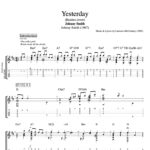The Dm9 Guitar Chord is a rich and nuanced chord that adds depth and sophistication to your guitar playing. As a member of the minor ninth family, the Dm9 extends beyond basic minor chords, offering a more complex and emotionally resonant sound. This tutorial will guide you through understanding, playing, and utilizing the Dm9 chord in your music.
To truly grasp the Dm9, it’s essential to understand its construction. This chord is built from five notes: D, F, A, C, and E. These notes correspond to specific intervals: the 1st (Root), b3rd (minor third), 5th (perfect fifth), b7th (minor seventh), and 9th (major ninth). If you’re new to chord intervals, exploring our guide on fretboard intervals will be beneficial. Understanding how intervals stack to create chords, as explained in our chord building tutorial, unlocks a deeper understanding of music theory and your instrument.
Unpacking the Dm9 Chord: Notes and Formula
The Dm9 chord’s unique character comes from the combination of minor and major intervals. It’s considered an intermediate level chord due to this complexity, sitting beyond simple major and minor triads. Let’s break down its formula:
- Root (1): D
- Minor Third (b3): F
- Perfect Fifth (5): A
- Minor Seventh (b7): C
- Major Ninth (9): E
This formula, 1-b3-5-b7-9, is the blueprint for all minor ninth chords. For a deeper dive into chord naming conventions, our chord notation tutorial is a valuable resource. And if you’re excited to learn more about chords like Dm9, our comprehensive ninth chords guide awaits.
Exploring Dm9 Chord Positions on the Guitar
Learning different voicings and positions of the Dm9 chord expands your musical vocabulary and fretboard knowledge. Below are several common positions, ranging from open to barre chord shapes. Chord diagrams are arranged from easier to more challenging. If you’re unfamiliar with reading chord diagrams, our guide on reading chord diagrams will help. Struggling with barre chords? Our Bar Chords Tips tutorial offers practical advice.
Dm9 Chord Position 1: Open Voicing
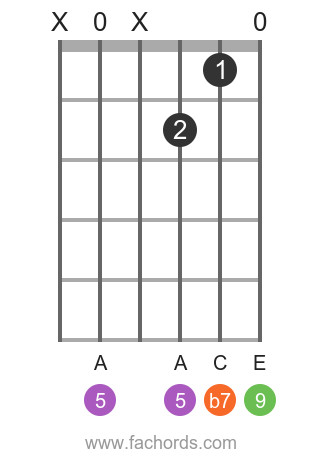 Dm9 Guitar Chord Open Position Diagram for Guitar Players
Dm9 Guitar Chord Open Position Diagram for Guitar Players
This open position Dm9 is a great starting point, offering a bright and airy sound.
Dm9 Chord Position 2: Movable Shape
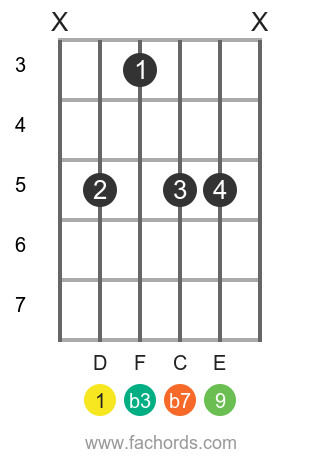 Movable Dm9 Chord Position 2 Diagram for Guitar
Movable Dm9 Chord Position 2 Diagram for Guitar
This movable shape allows you to play Dm9 and other minor ninth chords up and down the neck.
Dm9 Chord Position 3: Movable Shape
 Dm9 Guitar Chord Position 3 Diagram – Movable Shape
Dm9 Guitar Chord Position 3 Diagram – Movable Shape
Another useful movable position for playing Dm9 in different octaves.
Dm9 Chord Position 4: Barre Chord Shape
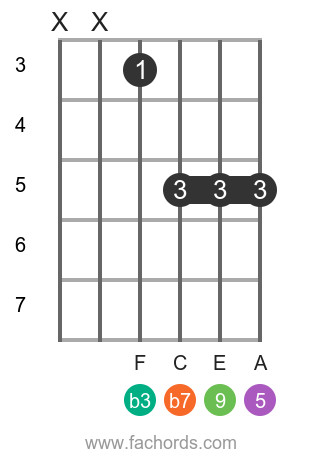 Barre Chord Dm9 Position 4 Guitar Diagram
Barre Chord Dm9 Position 4 Guitar Diagram
This barre chord shape provides a solid and full-bodied Dm9 sound.
Dm9 Chord Position 5: Barre Chord Shape
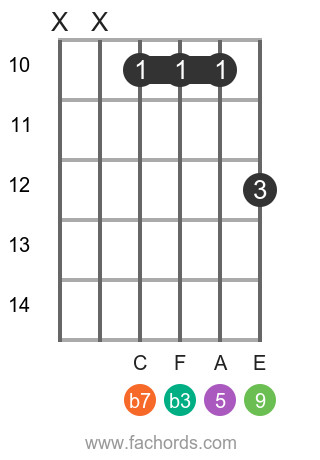 Dm9 Barre Chord Shape Position 5 for Guitar
Dm9 Barre Chord Shape Position 5 for Guitar
Another barre variation, offering a slightly different voicing of the Dm9 chord.
Dm9 Chord Position 6: Movable Barre Shape
 Movable Barre Dm9 Chord Position 6 – Guitar Chord Chart
Movable Barre Dm9 Chord Position 6 – Guitar Chord Chart
This final barre shape completes our exploration of common Dm9 positions.
Explore our extensive guitar chords library for even more chord shapes. For a handy reference offline, download our Free Guitar Chords Chart Pdf.
Dm9 and Beyond: Expanding Your Chordal Horizons
The Dm9 chord is just one piece of the vast guitar chord landscape. You can explore other minor ninth chords by simply changing the root note while maintaining the m9 structure. Here are a few to get you started:
Cm9 | D#m9 | Em9 | Fm9 | Gbm9 | Am9 | Bbm9
Experiment with creating your own Dm9 voicings across the fretboard by using the chord tones (D, F, A, C, E) indicated in the fretboard map provided in the original article. Your ears are your best guide – let them lead you to discover unique and sonically pleasing Dm9 variations! By mastering the Dm9 and understanding its construction, you unlock a world of richer, more expressive guitar playing.

